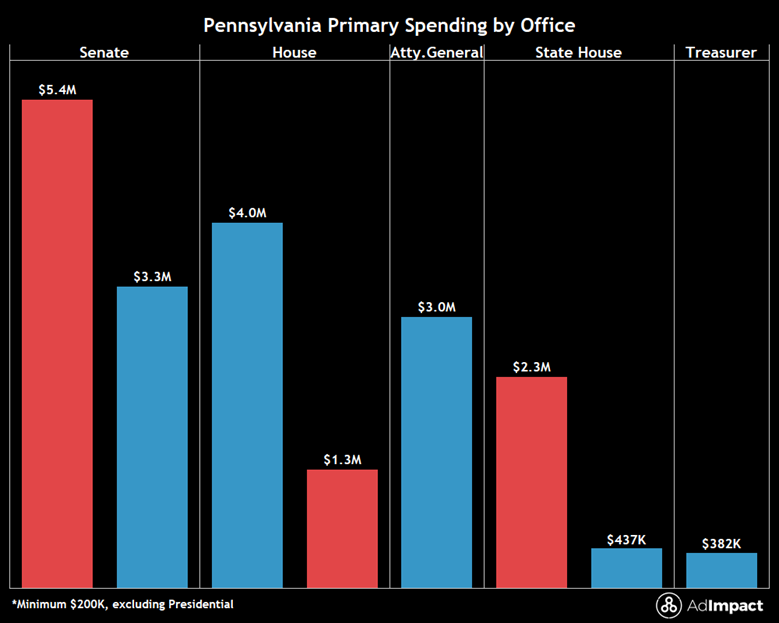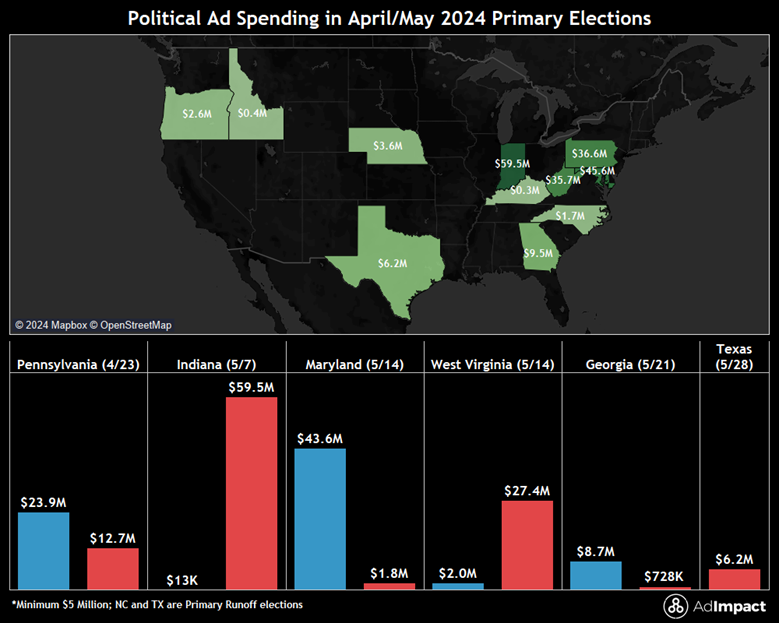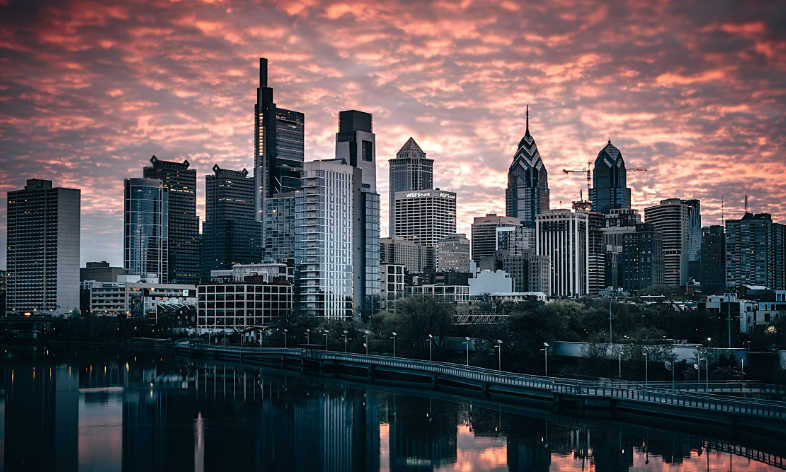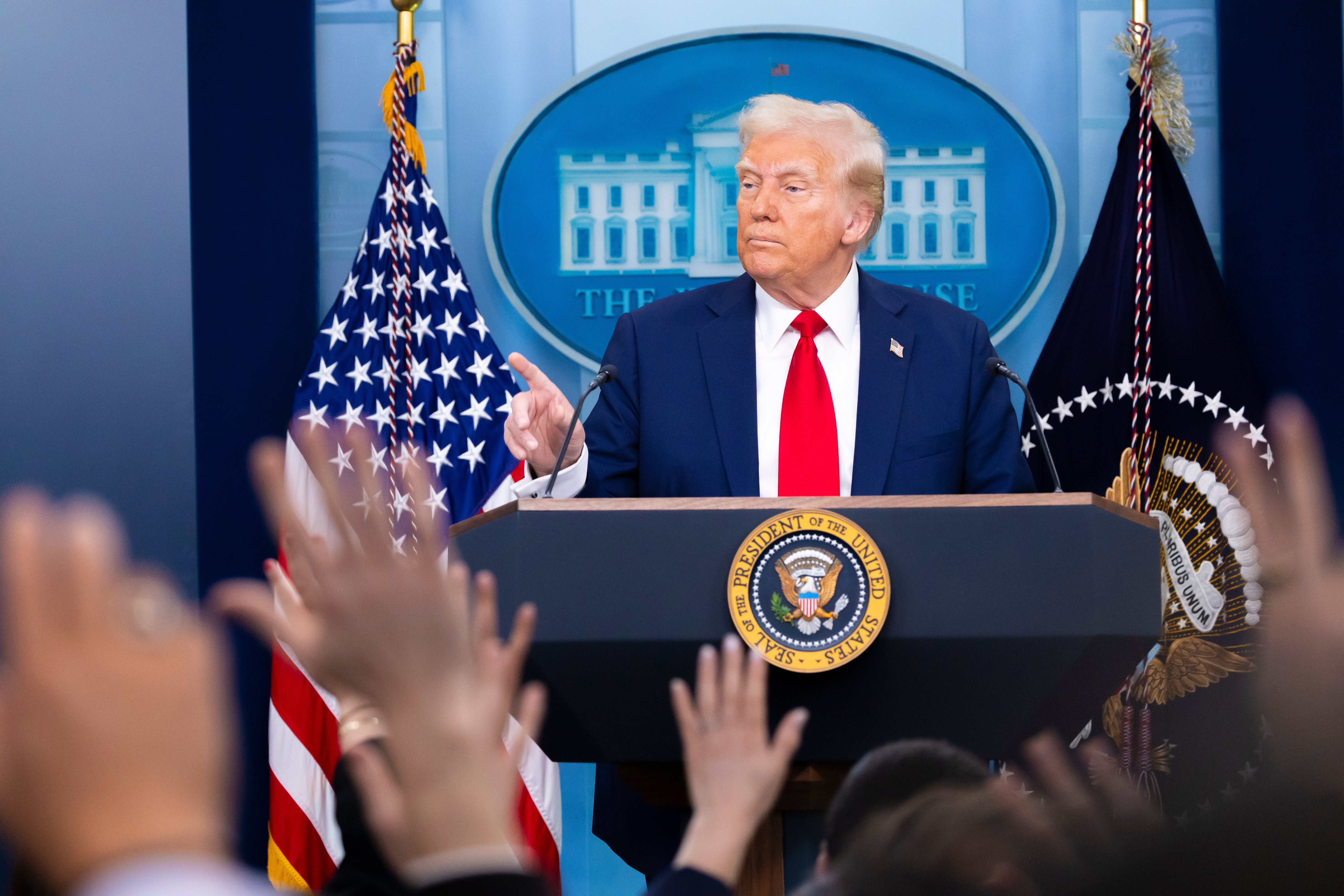Written by Tim Dias
While the primary election calendar has been relatively quiet since mid-March, ad spending for upcoming elections has been anything but. Today, Pennsylvania is holding its state and Presidential primary, followed by ten other states holding primary or primary runoff elections in May. AdImpact has tracked $36.6M in Pennsylvania ad spending and $203.3M in spending and reservations for upcoming elections throughout the remainder of April and May.
Pennsylvania—April 23
Nearly half the total ad spending in the Pennsylvania primaries, $16.6M, has been tied to the Presidential race. Of this, Joe Biden has seen $12.7M in ad support and Donald Trump has seen $1.9M in ad support. Additionally, U.S. House primaries have seen $5.3M, and the U.S. Senate primary has seen $8.7M. State legislative primaries have seen $2.9M and the PA Attorney General primary has seen $3.0M.

Looking to U.S. House primaries, PA-12 has seen 45% of all House primary spending in the state. There, incumbent Democratic Congresswoman Summer Lee, a member of “the Squad” of progressive Democrats, has faced an aggressive primary challenge. The Moderate PAC, a group that seeks to elect centrist Democrats, has thrown its support behind Bhavini Patel, Lee’s most serious challenger. Lee’s campaign has reserved $876K supporting her re-election. Overall, Lee has seen $1.6M in total ad support compared to $798K for Patel. Congresswoman Lee has been critical of the way the US has handled the conflict in Israel and Gaza and is opposed by United Democracy Project, an arm of AIPAC.
Lee’s criticism of US foreign policy has not been a factor in advertising messaging in the primary. Both candidates have used infrastructure as their main pitch to voters, with each candidate using the issue in a different manner. Lee touts her work delivering funds to the community for issues such as bridges, lead pipes, and public transportation, while at the same time, “standing up to Republican extremism.” Patel’s ad, on the other hand, ties infrastructure policy success to a strong Democratic Party and the work of President Biden. She says, “I’m about strengthening our party and rebuilding our region,” claiming that Lee seeks to dismantle the Democratic Party. While both messaging on local issues like infrastructure, both campaigns have aired ads highlighting the nationalization of partisan messaging. Partisan extremism, Joe Biden, abortion, and policing have all been mentioned in candidate ads.
Elsewhere in Pennsylvania, a few House districts have seen as notable ad spending. $929K has been spent in PA-08—a rare example of a district won by Trump in 2020 that is now represented by a Democrat. Incumbent Democrat Matt Cartwright has reserved $623K, even though he is running unopposed in the primary. In PA-07, also a swing district, $592K has been reserved, with $268K by incumbent Democrat Susan Wild. In PA-10, a competitive Democratic primary has seen $620K in spending and reservations with Mike O’Brien ($275K) and Janelle Stelson ($184K) as the leading spenders. Democratic candidates here are vying to take on incumbent Republican Scott Perry in November in this Lean R district.
In Pennsylvania’s Senate primary election, advertisers have spent $8.7M so far. Neither party’s primary is competitive, though both have seen significant ad spending and reservations. Republican Dave McCormick has seen the most ad support with $5.2M, of which $676K has been by his campaign and another $4.3M in coordination with the NRSC. Unlike in 2022, when McCormick lost the Senate primary to Mehmet Oz, who went on to lose by nearly 5 points, Republicans have cleared the primary field. On the other side, incumbent Democrat Bob Casey has seen $3.3M in ad support, nearly all from his own campaign. Both candidates have employed a messaging strategy that differentiates them from more partisan ad messaging employed in many primaries across the country. McCormick’s spots have leaned heavily upon his character—noting that he is not a career politician and highlighting his West Point education. Casey, meanwhile, has put economic issues at the forefront of his messaging, citing rising corporate profits and putting money back into voters’ pockets.
In the State House, 36 races have seen part of the $2.9M reserved ahead of the April 23 Primary. Commonwealth Leadership Fund has been the highest spending advertiser, spending $1.7M in four State House primaries targeting incumbent Democrats. These elections are the four most expensive State House primaries. Each of the four features a noncompetitive primary, as the four incumbents are running unopposed. The spots targeting them only refer to their names and the “laziest legislature in history.”
Lastly, the primary contest for Attorney General has seen $3.0M in ad spending and reservations. All of these reservations have been by Democratic advertisers. Leading the pack are Jared Solomon ($1.9M) and Jack Stollsteimer ($1.1M). The Republican primary for Attorney General has seen no ad spending.
Looking Ahead to May
Ten states hold either their state primary or primary runoff in May. Indiana holds its primary election on May 7. May 14will see Maryland, Nebraska, and West Virginia hold their primary elections as well as North Carolina, which will hold its primary runoff elections. Georgia, Kentucky, Oregon, and Idaho hold their state primaries on May 21. May 28 is the Primary Runoff date in Texas. The spending within each state can be seen below.

AdImpact will continue to analyze these critical primaries throughout May.
Interested in more political ad spending and messaging insights? Sign up for our biweekly newsletter, the Advantage, here!










